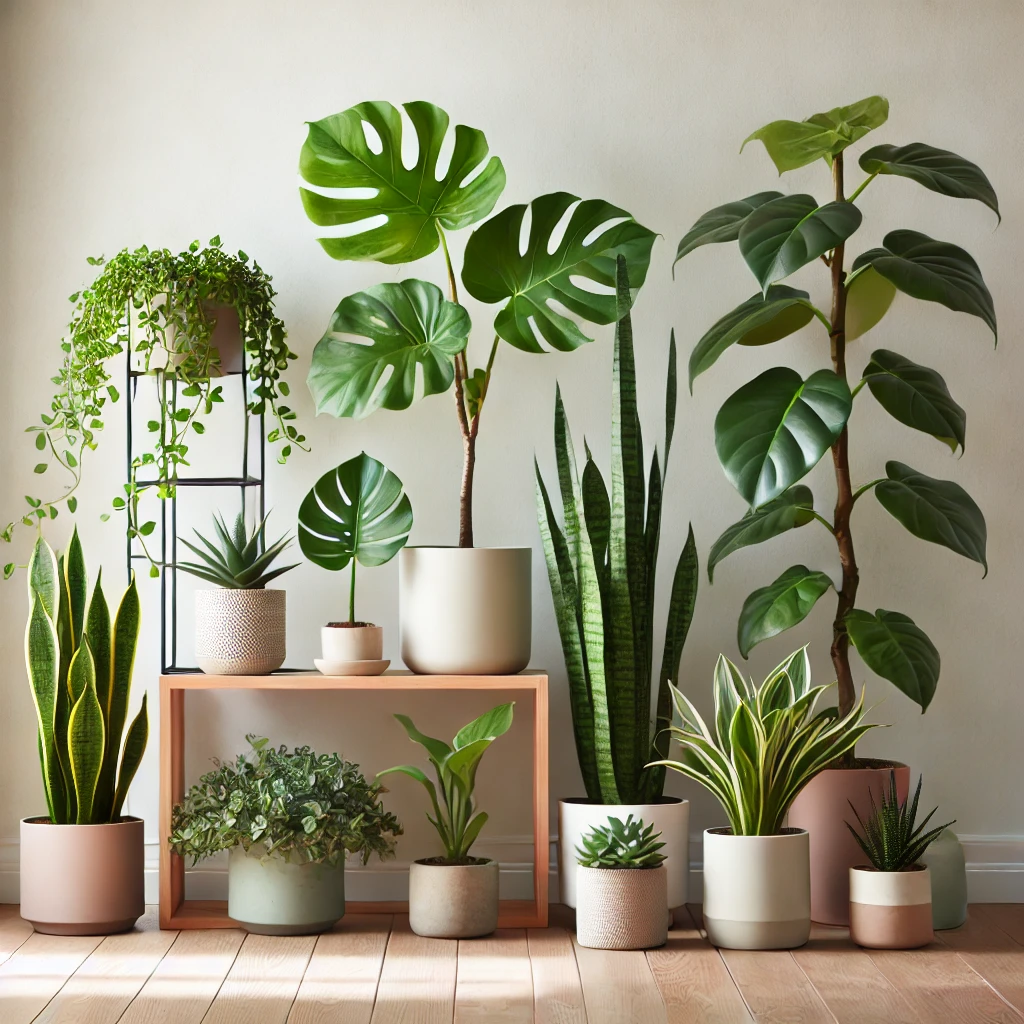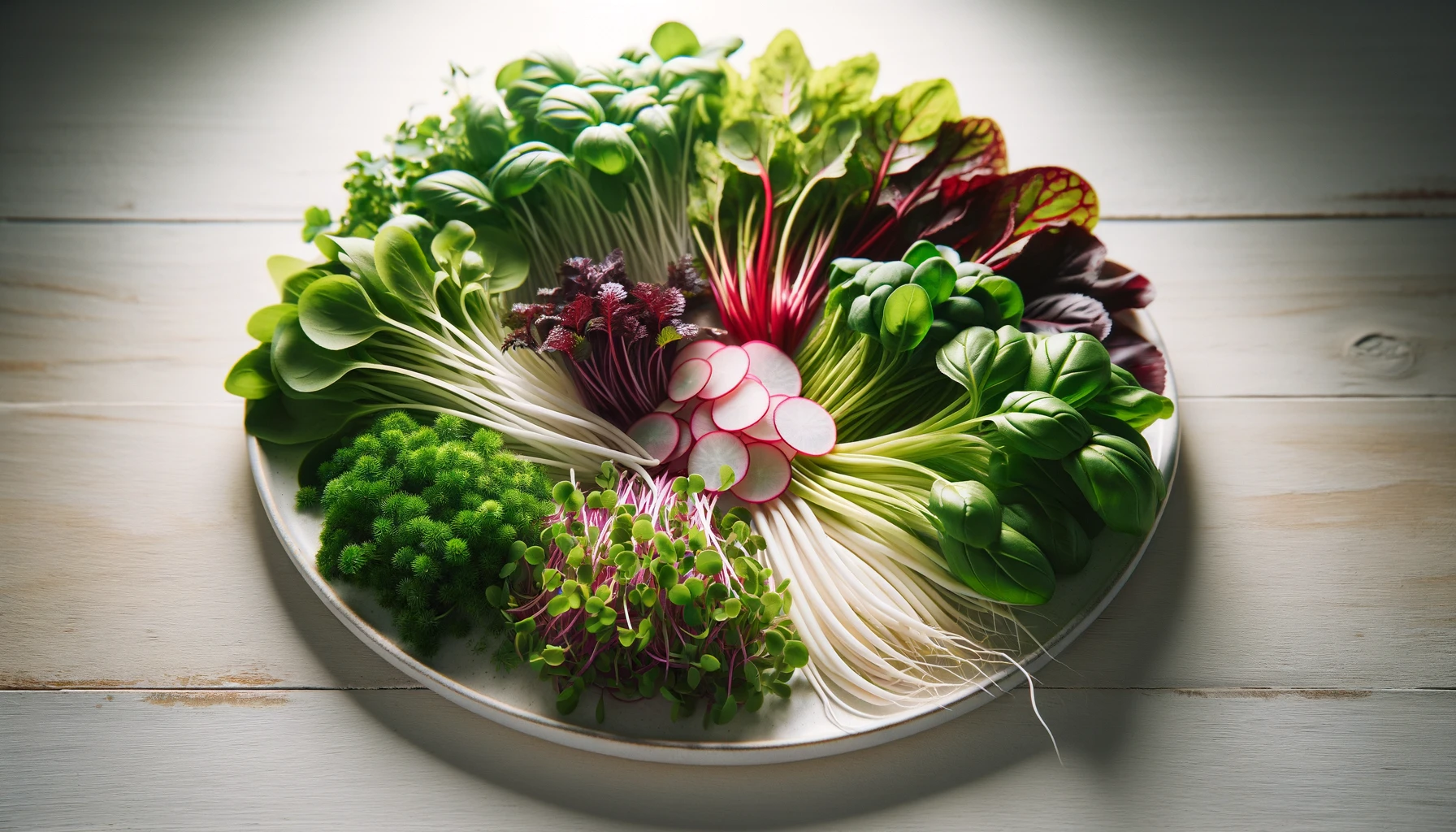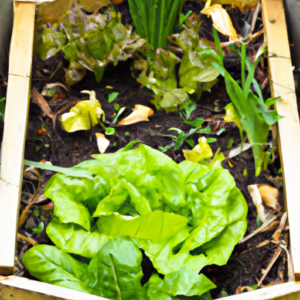Are you tired of guessing when it’s the ideal time to start planting your vegetable garden? Look no further! Introducing the “When Is The Best Time To Plant A Vegetable Garden” guide, designed to provide you with the ultimate answer to this age-old question. This comprehensive resource offers expert advice and insights on the optimal timing for planting a variety of vegetables, taking into account factors like climate, soil conditions, and plant growth requirements. Say goodbye to uncertainty and hello to a bountiful harvest with this must-have gardening companion.
Determining the Best Time
Factors to Consider
Deciding on the best time to plant a vegetable garden requires considering several factors. By taking into account the climate and growing zones of your region, frost dates, soil temperature, and suitable vegetable varieties, you can maximize your gardening success and yield bountiful harvests. Each of these factors plays a crucial role in determining when to start planting.
Climate and Growing Zones
Understanding the climate and growing zones of your area is essential for successful vegetable gardening. Different vegetables thrive in different climates, so it’s important to choose varieties that are suitable for your region’s temperature range, rainfall patterns, and overall climate conditions. Consult with your local agricultural extension office or reference gardening guides specific to your location to determine the vegetables that will thrive in your climate and growing zone.
Frost Dates
Knowing the average date of the last spring frost and the first fall frost is crucial for planning your planting schedule. Frost dates indicate the end of the frosty season in spring and the beginning of it in fall. Planting too early exposes your tender seedlings to potential damage from frost, while planting too late may not give your vegetables enough time to mature before the first fall frost. Consult your local agricultural extension office or reference online resources to determine the average frost dates for your area.
Soil Temperature
Soil temperature is another critical factor to consider when choosing the best time to plant. Different vegetables have different soil temperature requirements for germination and growth. Cold-season vegetables, such as peas and lettuce, prefer soil temperatures between 40°F and 75°F (4°C and 24°C), while warm-season vegetables, like tomatoes and peppers, thrive in soil temperatures between 60°F and 95°F (15°C and 35°C). Measure the soil temperature with a soil thermometer to ensure it falls within the optimal range for the vegetables you plan to grow.
Vegetable Varieties
Different vegetable varieties have varying tolerance levels to temperature extremes and weather conditions. Some varieties are more suitable for early spring planting, while others perform better in the heat of summer or the coolness of fall. Research and select vegetable varieties that align with your local climate, growing zone, and the time frame you have for planting. By choosing the appropriate vegetable varieties, you can enhance your chances of a successful harvest.
Spring Planting
Advantages
Spring planting offers several advantages to vegetable gardeners. The mild temperatures and longer daylight hours create favorable conditions for quick germination and robust growth. Cool-season vegetables, such as lettuce, spinach, and radishes, flourish in spring’s cooler temperatures, producing tender and flavorful crops. Additionally, spring planting allows for a longer growing season, providing an opportunity to grow multiple successions of vegetables and enjoy bountiful harvests.
Disadvantages
While spring planting has its advantages, there are a few disadvantages to consider. Unpredictable weather patterns, including late frost or heavy rainfall, can pose challenges to seedlings and early plantings. Additionally, pest populations tend to increase as the weather warms up, which may require more vigilance in pest management. It’s important to be prepared for potential weather fluctuations and pest pressures to ensure the success of your spring garden.
Vegetables for Spring Planting
Several vegetables thrive when planted in the spring. Cold-season crops like lettuce, arugula, kale, and spinach can be sown directly in the garden as soon as the soil can be worked. Root vegetables such as carrots, beets, and radishes also do well when planted in early spring. Other spring favorites include peas, broccoli, cabbage, and onions. These plants can be started indoors or directly sown in the garden, depending on your region’s specific climate and frost dates.
Summer Planting
Advantages
Summer planting offers its own set of advantages for vegetable gardeners. The warm temperatures and longer days provide optimal conditions for the growth and development of heat-loving vegetables. Fast-growing crops like tomatoes, peppers, and cucumbers thrive during the summer months, producing abundant yields. Additionally, warm-season vegetables tend to have fewer pest issues compared to the cooler seasons, reducing the need for extensive pest management.
Disadvantages
While summer planting has its benefits, there are a few disadvantages to consider as well. High temperatures and intense sunlight during the peak of summer can put stress on plants, leading to reduced crop yields or bolting (going to seed prematurely). Adequate water and proper shading or mulching are crucial to mitigate these challenges. Additionally, competition from weeds tends to be highest during summer, necessitating regular weeding and mulching to maintain plant health.
Vegetables for Summer Planting
A wide array of vegetables thrives when planted in the summer months. Warm-season favorites like tomatoes, peppers, eggplant, and sweet corn are ideally suited for the summer heat. Cucumbers, zucchini, and beans are also known for their productive growth during this time. Furthermore, herbs such as basil, dill, and cilantro flourish in the warm weather, providing flavorful additions to your culinary creations.
Fall Planting
Advantages
Fall planting provides unique advantages for vegetable gardeners. The cooler temperatures and milder sunlight of the fall season create ideal conditions for growing cool-season crops. As the summer heat recedes, leafy greens like lettuce, kale, and spinach tend to develop better flavor and texture. By planting in the fall, you can extend your growing season and enjoy a fresh harvest even as the days shorten and temperatures drop.
Disadvantages
Despite its benefits, fall planting has a few disadvantages to consider. The limited availability of certain vegetable varieties suited for fall planting may restrict your options. Additionally, unexpected early frost can affect the growth and maturity of vegetables, resulting in potentially smaller harvests. Ensuring your plants have enough time to develop before the first frost is essential for a successful fall garden.
Vegetables for Fall Planting
A variety of vegetables thrive when planted in the fall. Cold-season crops such as broccoli, cauliflower, Brussels sprouts, and cabbage perform exceptionally well in the cooler temperatures of autumn. Leafy greens like lettuce, spinach, and Swiss chard also grow vigorously during this season. Root crops like carrots, potatoes, and turnips can be planted in late summer for a fall harvest. Utilizing row covers or cold frames can provide extra protection from cold temperatures and extend the growing season further.
Companion Planting
Benefits of Companion Planting
Companion planting is the practice of strategically planting different crops together to enhance the health and productivity of your vegetable garden. It offers numerous benefits, such as natural pest control, improved crop yield, nutrient enhancement, and efficient space utilization. By selecting suitable companion plants, you can create a harmonious garden ecosystem that maximizes the growth and vitality of your vegetables.
Ideal Combinations
Certain plant combinations exhibit advantageous interactions that promote growth and repel pests. For example, the classic combination of tomatoes, basil, and marigold deters tomato hornworms and aphids while enhancing the flavor of tomatoes. Beans provide nitrogen to soil, benefitting neighboring corn plants, which in turn provide support for the climbing beans. Carrots, onions, and lettuce planted together create a mutually beneficial environment, with the onions deterring pests that could harm carrots and lettuce.
Avoiding Incompatible Plants
Just as some plant combinations are beneficial, others may inhibit growth or attract pests. For instance, potatoes should be kept away from tomatoes, as they are susceptible to similar diseases and pests. Similarly, beans and onions are incompatible due to their allelopathic effects on each other’s growth. Understanding both the favorable and unfavorable combinations of plants is key to successful companion planting. Consult gardening resources or reference charts that provide guidance on compatible and incompatible plant pairings.
Crop Rotation
Importance of Crop Rotation
Crop rotation is a crucial practice that helps maintain soil fertility, prevent disease buildup, and improve overall garden health. By systematically changing the location of crops within your garden from year to year, you can break pest and disease cycles, reduce weed pressure, and optimize nutrient usage. Crop rotation is especially important for plants in the same family, as many pests and diseases are specific to certain plant groups.
Proper Crop Rotation Schedule
Developing a proper crop rotation schedule involves dividing your garden into different planting beds or zones and rotating the groups of vegetables each year. The general principle is to avoid planting the same vegetable or any of its close relatives in the same area for at least three years. For example, if you grew tomatoes in one bed this year, it’s recommended to plant a different vegetable family, like beans or cabbage, in that bed the following year.
Benefits of Crop Rotation
Implementing crop rotation offers several benefits to your vegetable garden. It helps control soil-borne diseases, as pathogens that affect one plant family may not survive if their preferred host is absent. Different plant families have different nutrient requirements, so by rotating crops, you allow the soil to replenish specific nutrients and prevent their depletion. Additionally, crop rotation helps reduce weed pressure, as different plants have varying root systems that compete with weeds differently.

Succession Planting
Definition and Purpose
Succession planting involves sowing or transplanting crops at staggered intervals to ensure a continuous harvest throughout the growing season. The purpose of succession planting is to maximize the use of garden space and prolong the availability of fresh produce. By planting crops with different maturity dates, you can harvest a continuous supply of vegetables instead of having them all ready to harvest at once.
Implementation of Succession Planting
To implement succession planting, divide your garden into sections or dedicate specific areas for each crop. Plant fast-maturing vegetables first and then follow up with successions of the same or different vegetables at regular intervals based on their specific days to maturity. As one crop is harvested, another one takes its place, creating a constant supply of fresh produce. Succession planting can also be applied within individual crops by sowing seeds every few weeks or transplanting seedlings in multiple batches.
Benefits and Tips
Succession planting offers numerous benefits beyond prolonging the harvest. It maximizes the use of space, allowing for more crops to be grown in a limited area. It also helps manage the available workload by spreading out tasks such as planting, watering, and harvesting. To ensure success, consider the days to maturity of each crop and plan your planting schedule accordingly. Additionally, make sure to provide adequate nutrients and water to support the continuous growth of your successively planted crops.
Preparing the Garden
Soil Preparation
Proper soil preparation is paramount to a successful vegetable garden. Start by removing any weeds, rocks, or debris from the planting area. Loosen the soil with a garden fork or tiller to improve drainage and promote root growth. Incorporate organic matter, such as compost or well-rotted manure, to enhance soil fertility, structure, and moisture retention. Additionally, test your soil’s pH level and amend it if necessary to ensure optimal nutrient availability for your vegetable plants.
Amending the Soil
Amending the soil involves adding specific nutrients or adjusting its composition to suit the needs of your vegetable crops. Conducting a soil test can provide valuable insights into your soil’s nutrient profile and pH level. Based on the results, amend the soil with organic or commercial fertilizers to ensure adequate levels of essential nutrients. Adjusting the pH level can be done by adding lime to raise the pH (for acidic soils) or sulfur to lower the pH (for alkaline soils), creating a more suitable environment for your vegetable garden.
Weed Control
Weed control is an ongoing task in any vegetable garden. Preventing weeds from taking hold is crucial as they compete with your vegetable plants for nutrients, water, and sunlight. Mulching with organic materials, such as straw or wood chips, can effectively reduce weed growth by blocking sunlight and preventing weed seeds from germinating. Regular hand-weeding or using a garden hoe to cut off young weeds can also help keep weed populations under control.
Organic Pest Management
The use of organic pest management practices promotes a healthy and balanced ecosystem in your vegetable garden. Encouraging beneficial insects, such as ladybugs and lacewings, helps control aphid populations naturally. Building birdhouses or providing bird feeders attracts birds that feed on garden pests. Employing physical barriers like row covers or netting can protect plants from insect damage. Additionally, using organic pesticides derived from natural substances like neem oil or insecticidal soaps can effectively manage pests without causing harm to beneficial insects or the environment.

Garden Maintenance
Watering
Proper watering is vital for the health and productivity of your vegetable garden. Most vegetables require consistent moisture throughout their growing season. The frequency and amount of water needed depend on various factors such as weather conditions, soil type, and the stage of plant growth. Mulching helps retain soil moisture and reduce evaporation, while drip irrigation or soaker hoses provide efficient and targeted watering. Regularly monitor soil moisture levels and adjust your watering schedule as necessary to avoid both overwatering and underwatering.
Mulching
Mulching serves multiple purposes in the vegetable garden. It helps regulate soil temperature, conserves moisture, suppresses weed growth, and improves the health of the soil. Organic mulches like straw or wood chips also gradually break down, adding organic matter to the soil and enhancing its fertility. Apply a layer of mulch around your vegetable plants, avoiding direct contact with stems to prevent moisture-related issues. Replenish the mulch as needed throughout the growing season to maintain its benefits.
Supporting Plants
Providing support for certain vegetable plants ensures their proper growth and minimizes the risk of damage. Tall-growing or vining plants such as tomatoes, peas, and cucumbers benefit from the use of stakes, trellises, or cages. These structures support the weight of the plants, promote good air circulation, and make harvesting easier. Using plant ties or clips to secure the stems to the support system prevents them from bending or breaking under the weight of the fruit or from being damaged by strong winds.
Pruning and Tidying
Regular pruning and tidying in the vegetable garden promote plant health and productivity. Remove any dead or diseased plant material to prevent the spread of diseases. Trimming excess foliage or side shoots on tomato plants improves air circulation and helps redirect energy towards fruit development. Some crops, like herbs or leafy greens, benefit from occasional harvesting of outer leaves, encouraging continuous growth. Regularly inspect your plants for signs of pests or diseases and promptly address any issues to maintain a thriving garden.
Harvest and Post-Harvest Care
Signs of Harvest Readiness
Determining the right time to harvest your vegetables ensures the best flavor, texture, and nutritional value. Each vegetable has its own indicators of harvest readiness. For example, ripe tomatoes should have vibrant color, a firm texture, and easily detach from the stem when gently twisted. Mature lettuce can be picked when the leaves are full-sized and firm but still tender. Refer to seed packets, gardening guides, or reputable online resources to learn about the specific signs of harvest readiness for each vegetable variety you grow.
Proper Harvesting Techniques
To maximize the quality and lifespan of your harvested vegetables, employ proper harvesting techniques. Use clean and sharp hand tools or scissors to avoid damaging or bruising the plants. Harvest greens and leafy vegetables by cutting the outer leaves, leaving the center intact for continual growth. Root crops should be gently lifted from the soil, minimizing damage to the roots. Handle harvested produce with care to prevent bruising or other physical damage that could reduce its shelf life.
Storing and Preserving
After harvest, it’s important to handle your vegetables properly to maintain their freshness and flavor. Some crops, like tomatoes, peppers, and cucumbers, are best stored at room temperature away from direct sunlight. Others, such as leafy greens, benefit from washing and storing in the refrigerator to prolong their crispness. Root vegetables can be stored in a cool and dark place, like a root cellar or pantry, to minimize moisture loss and preserve their quality. Additionally, consider preserving excess harvest through methods like canning, freezing, or drying to enjoy your homegrown produce year-round.
By considering the timing of planting, choosing suitable vegetable varieties, implementing proper gardening practices, and following through with diligent care and maintenance, you can create a thriving and productive vegetable garden. Enjoy the journey of watching your seeds sprout, plants grow, and vegetables flourish from seed to harvest, knowing that you have maximized your gardening potential by selecting the best times and methods for a successful vegetable garden. Happy gardening!






